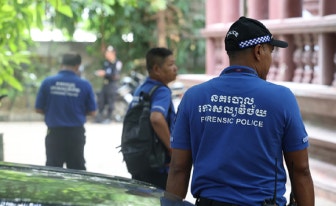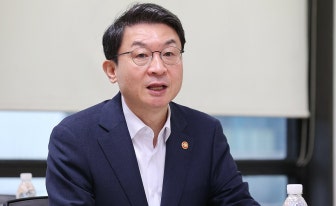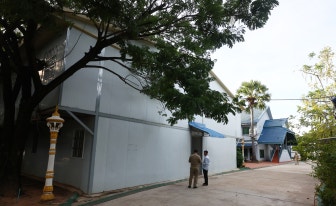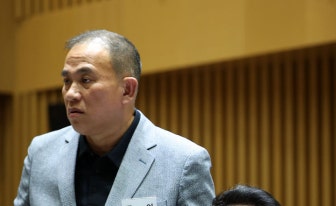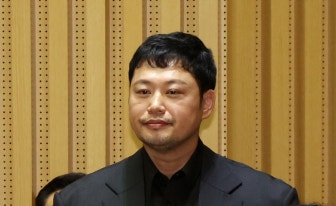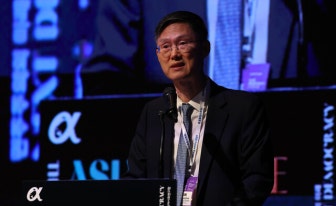In a darkened movie theater in Seoul, over 100 people sat facing a blank movie screen as the soft chime of crystal singing bowls filled the chamber. This unusual gathering at CGV Dongdaemun wasn’t for a film but for a 90-minute “urban temple stay” — a modern meditation program bringing Buddhist practice into the city.
“Practicing Buddhism begins with learning to see reality as it is,” said Buddhist monk Seon Il, who was leading the event’s music meditation. “Meditation isn’t about setting aside special time — it starts from feeling your breath and emotions exactly as they are in this very moment.”
A wave of nods rippled across the seats.
Attendees ranged across generations, with people in their 20s to 30s making up the largest group at 44 percent, followed by those in their 40s at 30 percent, 50s at 10 percent, 60s at 7 percent, 70s at 7 percent and teens or younger at 2 percent, per the Cultural Corps of Korean Buddhism.
Thirty-three-year-old Choi Yoon-jung was also a frequent temple stay goer, and when she first heard of the concept - a mini temply stay at a Seoul cinema -, she was skeptical. “When doing a typical temple stay in the faraway countryside, the scenery itself heals you, as if saying, 'You should rest now.' The whole point is to get away, so I have always opted for programs that were outside big cities."
But she was proven wrong after the event. "At 'Silent Theater,' through the monk's words and the sounds around me, I surprisingly realized that depending on what I open myself to, I can find rest and calm in other ways and places too."
Saturday’s program was comprised of avid temple stay goers invited by the Buddhism Corps, including a 55-year-old who has claimed he participated in over 150 temple stays.
“The ‘Silent Theater‘ program is a meaningful attempt to show that Buddhist practice and rest can coexist even in the heart of the city,” said Head of the Cultural Corps of Korean Buddhism Il Hwa.
The afternoon began with food meditation, guided by Buddhist monk Jin Gak of Naeso Temple in Buan County, North Jeolla.
“Even the simple act of drinking tea contains the entire path of Buddhist practice,” he said.
As attendees slowly chewed their food with their eyes closed, Venerable Jin Gak urged them to form a connection among mind, body and reality.
“The object remains the same, but when perception changes, emotion changes,” he said. “The beginning of practice is realizing that not only food but all emotions and conflicts stem not from the outside world but from one’s own mind.”
The following atmosphere was more convivial as the audience engaged in an enthusiastic Q. and A. with Venerables Jin Gak and Seon Il.
“Why did you decide to become a monk?” “How do I find peace when I’m angry at myself for putting up with my boyfriend’s disrespect?” “If I can’t avoid someone I dislike, how should I deal with them?” “I have many desires, but when I try to let go of them, I feel listless and burned out — what should I do?”
In addition to stating their intimate reasons for entering temple life, the two monks, who took turns answering, gave candid and wise advice: The more you cling to pain, the larger it grows; cultivate compassion toward others; like a lotus that draws nourishment from mud, find the seed of awakening even within suffering; don’t obsess.
“I think this movie theater temple stay program was a refreshing attempt,” Venerable Jin Gak told the Korea JoongAng Daily after the program. “It’s been about 25 years since the temple stay programs started, and this was a new kind of trial in the middle of the city — a good plan that brings us closer to the public and those less familiar with Buddhism.”
He added, “Because it’s held in such an accessible setting, even people who aren’t Buddhist or don’t have much interest in Buddhism can come. In the end, many people suffer from pain that begins in their own minds — that’s not about religion; it’s just part of human life. I hope anyone experiencing that kind of struggle can come here and find some comfort.”
The event concluded with sound meditation using crystal singing bowls — a practice meant to help participants listen to the voice of their own minds, find calm and heighten their awareness of themselves and reality.
“Begin by placing your attention at the tip of your nose,” Venerable Seon Il guided softly. “Take a slow, deep breath in — then exhale gently. Take another deep breath, and as you breathe out slowly, bring a light smile to your face. Now, as you continue to breathe comfortably, surrender yourself completely to the sound and vibration of the singing bowls, releasing all tension in your body and mind.”



![Tea and sweets served for food meditation [LEE JIAN]](https://imgnews.pstatic.net/image/640/2025/10/22/0000078633_004_20251022094911649.jpg?type=w860)
![Buddhist monks Jin Gak, left, and Il Hwa answer questions from the audience [CULTURAL CORPS OF KOREAN BUDDHISM]](https://imgnews.pstatic.net/image/640/2025/10/22/0000078633_005_20251022094911767.jpg?type=w860)
![A participant's hands are locked together as she prays [LEE JIAN]](https://imgnews.pstatic.net/image/640/2025/10/22/0000078633_006_20251022094911853.jpg?type=w860)



















